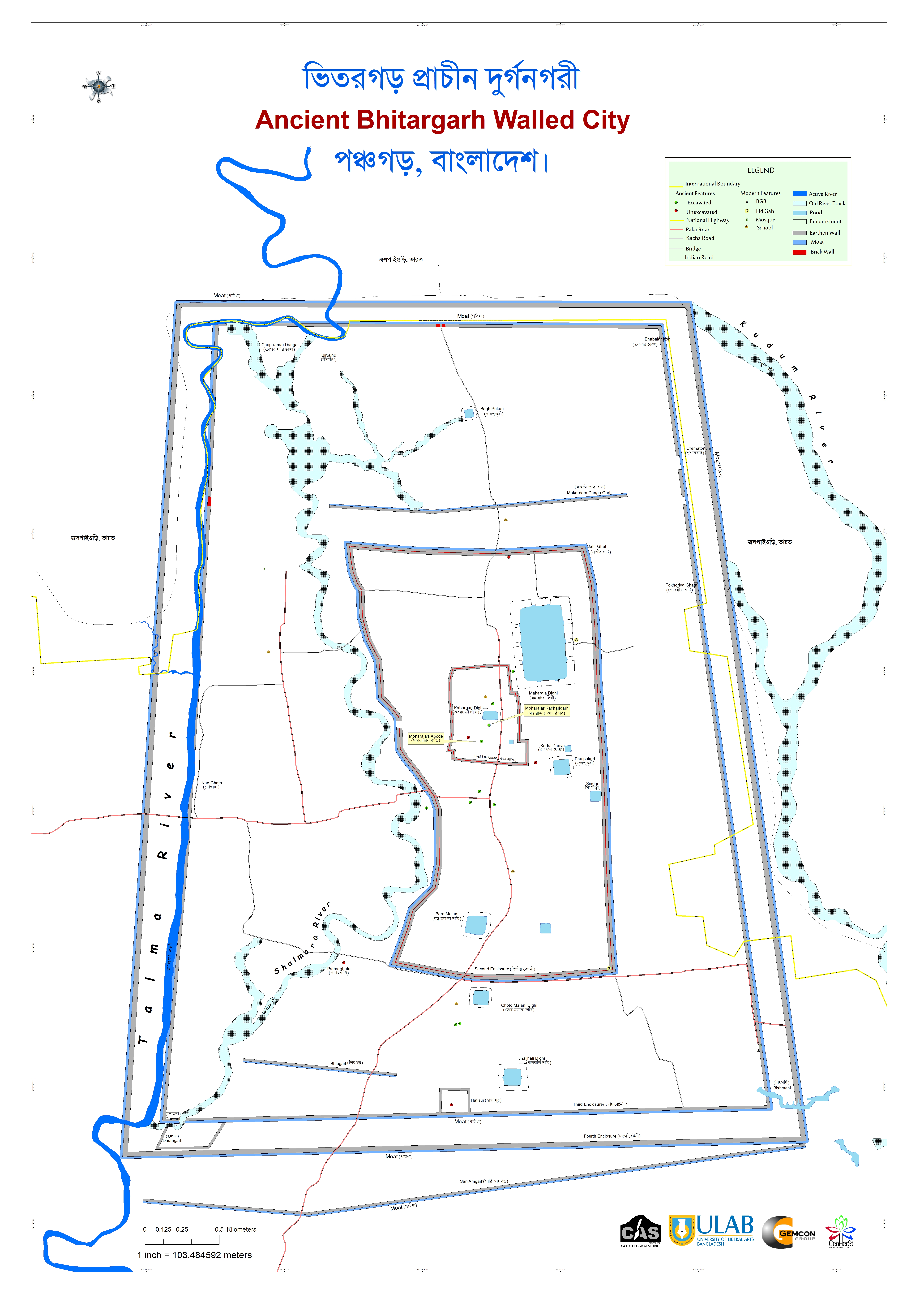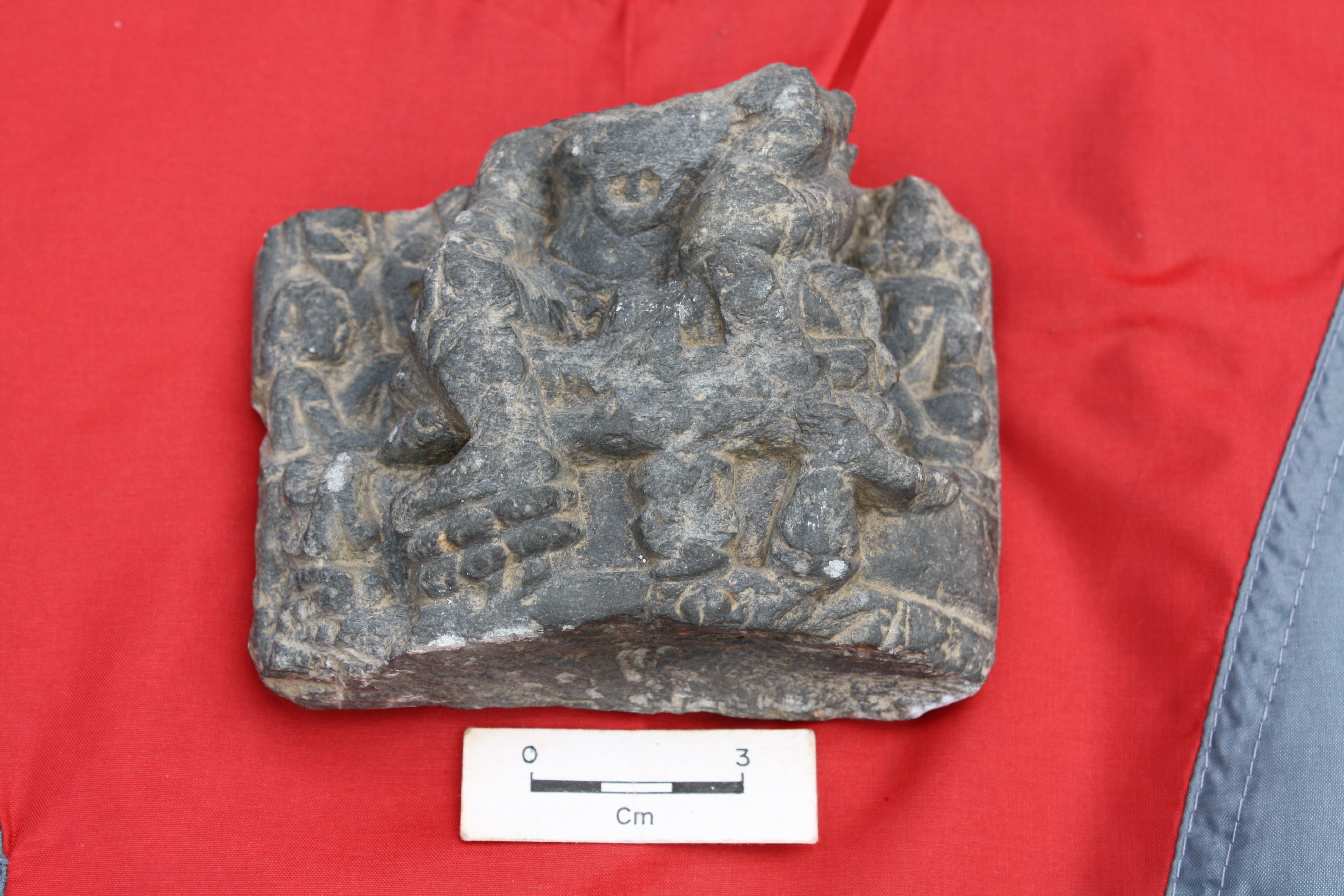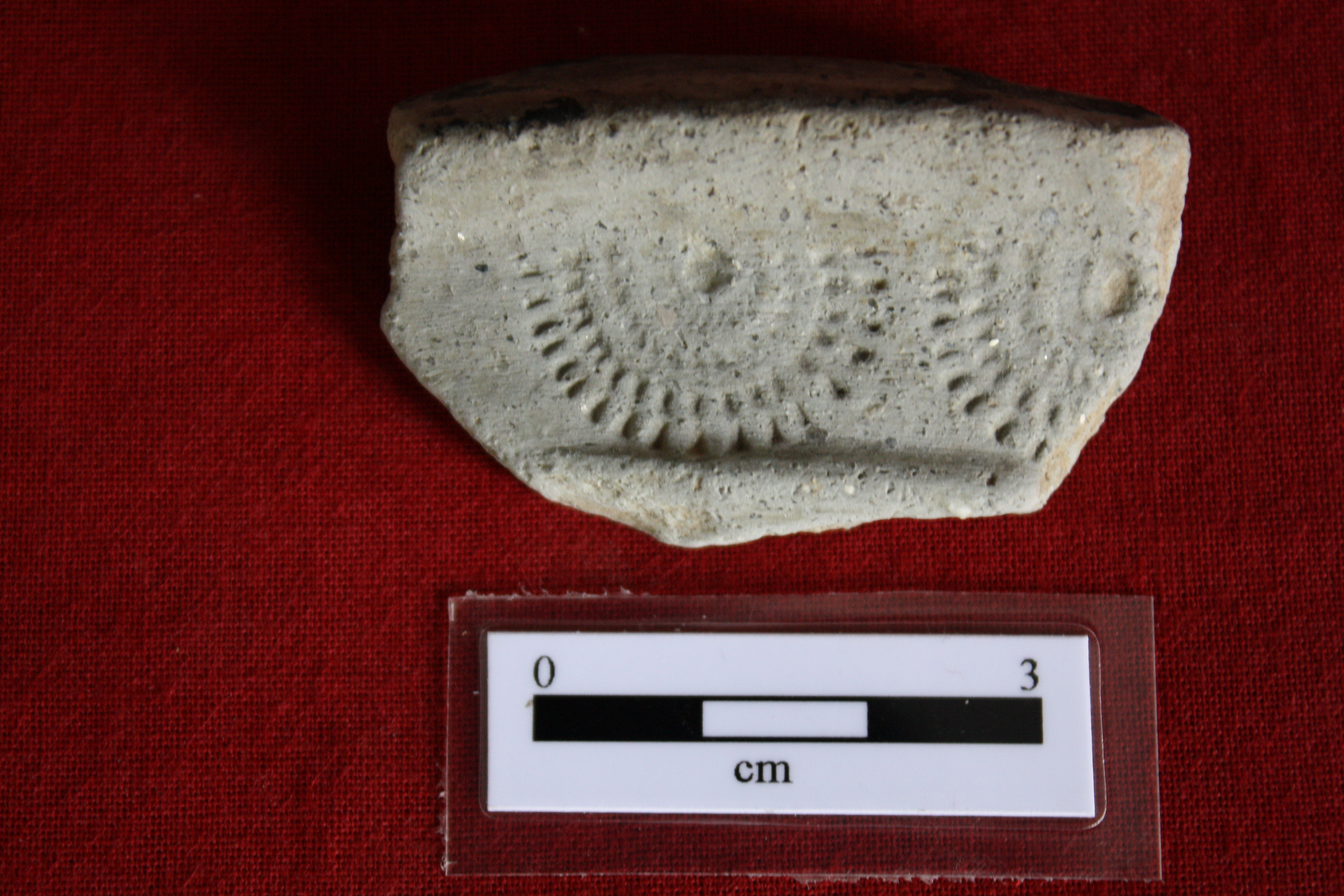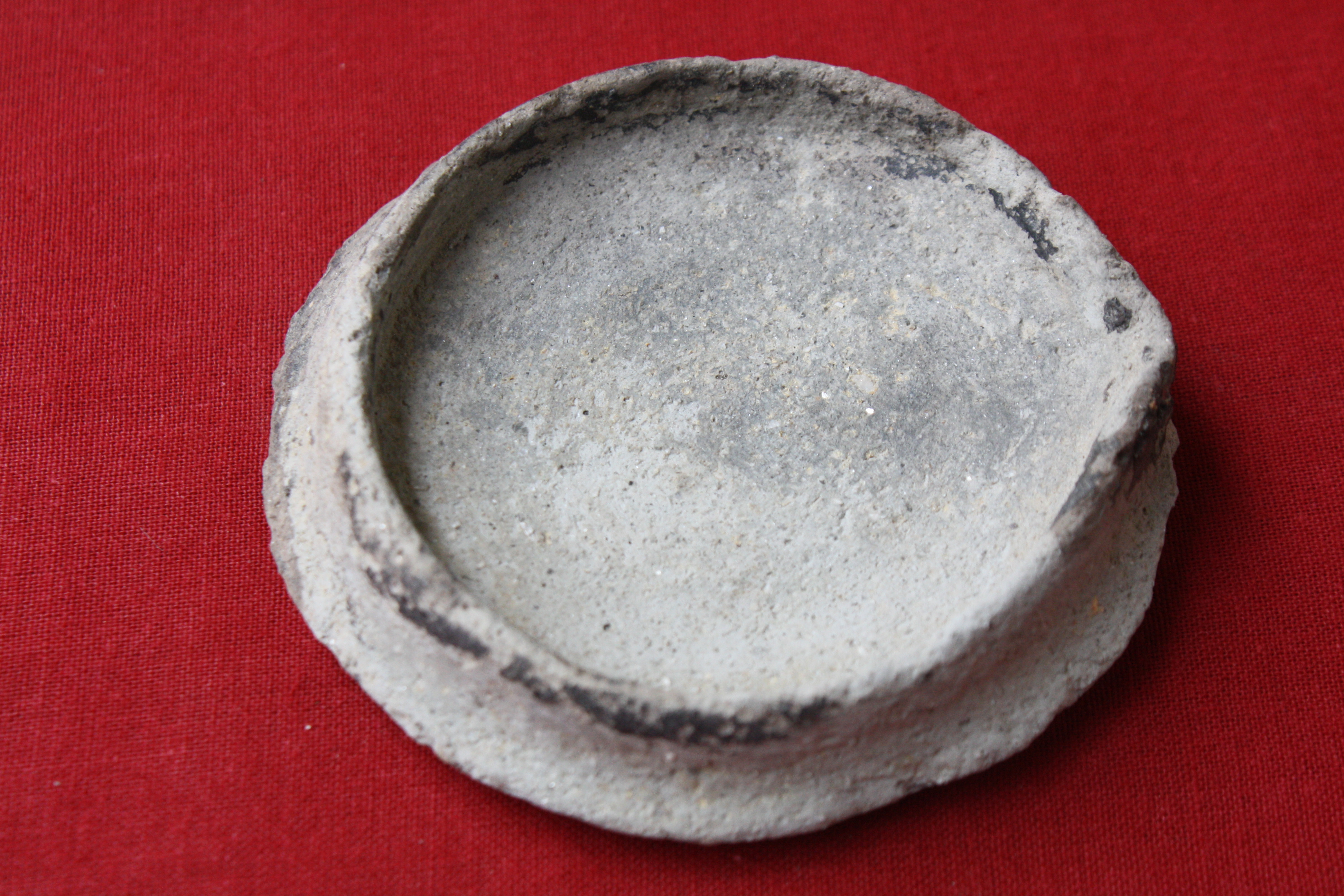Ancient fort city in the North | Bangladesh on Record
December 18, 2019
By Ananta Yusuf
No book offers any chronological history of the ancient fortified city of Bhitargarh. But ruins of this 1500-year-old city are so loud and clear that the city’s outlines are visible from space. Try Google Earth, hover over Panchagarh where this city was located and see it for yourself.
As archaeologists have unearthed nine new structures in recent years, Bhitargarh is emerging as the biggest fortified city in South Asia.

Located about 16km north of Panchagarh, Bhitargarh is protected by four quadrangle walls made of earth and bricks — each maintaining a considerable distance from another. Its outer walls accompanied by moats surround a 25-square kilometre area. These walls protected the city from flood as well as notorious thugs’ invasion.
The civilisation was technologically so advanced that they had made stone dams and diverted the Shalmara river-course inside the fortified city to retain water for households and agricultural use during the dry season. Sadly, except for a few remaining stones, the large dam does not exist now.

“The nine monuments date back to the early medieval period, eight of them are temples and the rest is a residential complex,” says Shahnaj Husne Jahan, professor and director of Centre for Archaeological Studies of University of Liberal Arts Bangladesh (ULAB). Shahnaj has been working there with her students since 2008.
She also suggests that Bhitargarh was an independent city state governed by a sovereign administration between the 6th and 13th centuries.

Understanding the history of Bhitargarh is difficult because it has no inscription or written records. Archaeologists must depend on the ruins and myths that are still alive among the locals.
The city builders used bricks with mud to build the first, second and some strategic points of the third quadrangle walls, as those were built before the introduction of lime and surki (brick dust) for constructions. The fourth one was built with mud only.

The city’s monuments were built before people learnt to use lime and surki to build structures. Its long walls and temple bricks were stuck with mud. There is no use of medieval arches and domes. Instead, its architects used columns, lintels and beams to support the tiled roof. Archaeologists have found broken pieces of tiled roof there.
The site has 10 water reservoirs, including the notorious Maharajar Dighi. According to local myth, a king of this city named Prithu Raja along with his guards committed suicide in this water body when they were cornered by “unholy” Kichok tribe that had attacked the city.

According to Prof Shahnaj, a reference to the Kichok tribe can be found in Mahabharata, which illustrates how Pandava brothers fought against the Kichok tribes. “May be they were the descendants of the Kirata who lived in the mountain country between Nepal and Bhutan. Now the Indian state known as Cooch Behar is actually the place where the Kichoks established their kingdom in the middle age.”
In the fortified city, archaeologists also found many items of daily use such as pottery, earthen lamps, terracotta beads, and copper and iron objects.
The city had a significant role in trade, as its strategic location in the ancient overland and river routes connected it to Tibet, Sikkim, Nepal, Bhutan, Assam, Cooch Behar and lower valleys of the Ganges.

LEGENDS OF PRITHU RAJA
If you visit this place, you will get to hear local folklores about the ruined city as the capital of a kingdom headed by Prithu. Most of the heaps of earth that survive the ravages of time are named after him — Maharajar Bhita, Maharajar Kacharighar and Maharajar Dighi.

According to Prof Shahnaj, the genealogy of kings of Cooch Behar included one “Maharaja Prithu”. She connects that history with local stories and believes that Prithu was the last king of this grand fortified city around 13th century.
According to local myths, Prithu Raja would rather let his kingdom go to ruins than see it surrendered to a savage tribe called Kichoks. Prithu was respected and deified by his subjects, and he could not stand seeing his “purity sullied” by such savages. So the king decided to end his life by throwing himself into a water reservoir named Maharajar Dighi, followed by his guards, thus leaving his kingdom to despair and plunder.

NO PRESERVATION
Professor Shahnaj expressed despair at the state of Bhitargarh, saying that lack of preservation efforts could result in the settlement being lost forever.
Despite a High Court stay order prohibiting all sorts of construction around the site, inhabitants of Bhitargarh continue to extend cultivation and habitation by demolishing the walls and monuments in the area.

“Bhitargarh is on the verge of collapse, as locals are building structures within the site, violating the High Court’s order imposing a suspension on all kinds of constructional work in the area,” explained Shahnaj.
However, there are over 700 acres of government-owned land, but the department has apparently done nothing to acquire them to preserve the site. The recent excavation and subsequent preservation efforts of a ghat at Maharajar Dighi bear the signs of sheer negligence.
Instead of sitting idle like the rest of us, Dr Shahnaj and her team are actually working towards protecting a significant part of our history. All we need to do is support them in their endeavour, so that their efforts will not go in vain.












